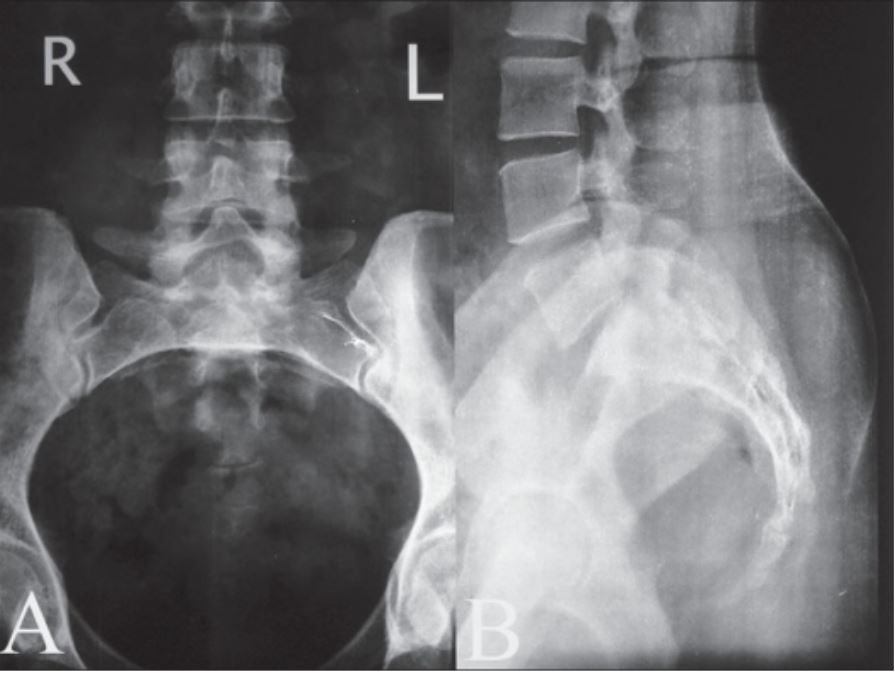Playlist
Show Playlist
Hide Playlist
How to Approach Spinal Cord Pathology (Macro)
-
Slides Diseases of the Spinal Cord.pdf
-
Download Lecture Overview
00:00 So how do we approach myelopathy in those patients who present with paraparesis and hyperreflexia and we're worried about a spinal cord pathology. What's our approach to the work-up? Well, the first step is imaging. We can do either CT or MRI imaging. CT is good for looking at structural or degenerative changes within the spinal column, but ultimately MRI is typically the modality of choice for evaluating these patients. So, the first step is going to be to get an MRI of the spine. And we do that, we can look at several areas of the spinal cord where this pathology may be arising. 00:38 And further localize the patient's symptoms and pathology which limits our differential and focuses our management. One place where we may see pathology is in the extradural region. That's all those areas outside of the dura. The epidural venous plexus or the vertebral body and bones and pathology in those areas. We can see tumors, metastasis into the bone in a patient with metastatic cancer or compression from an infectious process in the epidural space, something in those areas compressing the spinal cord in. Typically, the management for extradural lesions is going to be surgery. 01:15 If there is something compressing the spinal cord, take it out. We may see something that's inside the dura or intradural but outside of the spinal cord in that subarachnoid space around the spinal cord. And we call that pathology intradural and extramedullary. 01:31 There are certain diseases that affect that area and we think about tumors, meningiomas developing in and around the dura and peripheral nerve sheath tumors which arise from the peripheral nerves, those nerve roots as they exit the spinal cord. 01:47 Moving still further in, we see pathology within the spinal cord itself that is intradural and intramedullary pathology. Here, there's non-compression of the spinal cord from something outside the cord, but abnormal signal and abnormal pathology within the spinal cord itself. To evaluate and work up these patients, we'll consider spinal fluid sampling to look for an infection and inflammatory process or a tumor within the cord. We may consider angiography or vessel imaging either with MRA or a catheter angiogram and then we may consider systemic markers to look for potential problems that could affect the cord, inflammatory markers or vitamin deficiencies or toxins that could build up within the spinal cord and other types of pathology. When we see signal within the spinal cord suggesting an intradural intramedullary process, there are 4 things we consider on the differential for those patients. Vascular myelopathies, problems coming from the blood vessel, demyelinating myelopathies which are really important and I want you to understand a few of those that we'll go through. Infectious myelopathies and non-infectious inflammatory myelopathies, things like neurosarcoidosis or systemic lupus or other systemic inflammatory disorders that can affect the spinal cord secondarily. And then the last thing we may see on the MRI scan is it may look normal. We may see a normal MRI. No pathology extradurally, no pathology intradurally, but a normal cord. And there are 2 thoughts there, the first is "Is this really a myelopathy?" Let's go back to the patient and confirm on our exam that this is a spinal cord disorder. Is it something else? Is it peripheral nerve problem? And then think about some of those things that affect the spinal cord without causing abnormality on the scan. ALS or amyotrophic lateral sclerosis is one consideration. It's a motor neuron disorder. And then other toxic or metabolic problems in their early process may not show up on the MRI scan but cause a clinical myelopathy. And then finally functional disorders which can present in this way. So this approach I find helpful in evaluating patients with myelopathy and using both my exam and the imaging to refine my differential diagnosis and focus diagnostic testing.
About the Lecture
The lecture How to Approach Spinal Cord Pathology (Macro) by Roy Strowd, MD is from the course Diseases of the Spinal Cord.
Included Quiz Questions
Which term describes a lesion found in the subarachnoid space outside the spinal cord but still within the dura?
- Intradural, extramedullary
- Extraspinal
- Extradural
- Intramedullary, intradural
- Subdural
What tests should be considered if an MRI does not show spinal cord compression but is abnormal with intramedullary signal intensity changes?
- CSF sampling, systemic inflammatory markers, angiography
- CT scan, electromyography
- Surgical biopsy
- CSF sampling, CT scan
- Ultrasound, nerve conduction study
Which of the following myelopathies may present with normal findings on an MRI?
- Amyotrophic lateral sclerosis
- Meningioma
- Subdural hematoma
- Vascular myelopathy
- Multiple sclerosis
Customer reviews
5,0 of 5 stars
| 5 Stars |
|
5 |
| 4 Stars |
|
0 |
| 3 Stars |
|
0 |
| 2 Stars |
|
0 |
| 1 Star |
|
0 |




